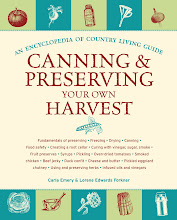I have rarely lived in the same place for more then six months, which leaves little time for planting gardens. But everywhere I have lived, from Seattle to the Andes to East Asia, I have been able to find herbs, which have been a wonderful luxury. In Ecuador, it was from the mystic in the market who gave me the same plants that she used to ward off evil spirits from babies. I declined the ceremony, but excitedly took the plants to plant in my patio next to the river. In Korea, I tentatively held out foreign currency to a man with piles of plants in the back of a flatbed. Although I couldn’t read the characters used to label the plants, I could smell their familiarity; crushing a variety of basil between my fingers to smell their pungency as the man demonstrated that these were plants you could smell and eat by proceeding to eat parts of every herb in his truck. I smile and think he was desperately trying to share the magic of his herbs with me, a foreigner, on the side of a twelve-lane road in Seoul.
And so, I have had lavender flourishing in high-rise apartments, dried and tucked under my pillow, the smell reminding me of my mother’s garden, and fresh basil all winter long to evoke summers in the Northwest. Herbs are truly a pleasure to grow and harvest.
Carla Emery loves herbs, too, and uses them in balms, poultices, cooking, and even sachets to help with headaches, insomnia, and melancholy.
Sachets and Herb Pillows:
These are cloth “pillows” made to hold dried, crushed herbs and flowers. Sachets are tiny bags meant to be placed in a drawer or closet to scent clothing, sheets and pillowcases, or stationery. Herb pillows are several times larger and are traditionally used to overcome a sickroom smell and soothe nerves. You can experiment to get your favorite scent. Lavender is traditional, but don’t be afraid to try other mixtures. Lilac, rose petals, sweet peas, mint, rosemary, and thyme are all suitable. Or use lavender, sage, peppermint, and lemon balm in some combination, or sage, peppermint, and lemon balm without lavender. If you are making sachets intended to keep moths away, try a mixture of the insect-repellent herbs: cotton lavender, mint, rosemary, rue, southernwood, tansy, and wormwood.
As in the case of potpourris, the scent, whatever its source, will not last. To renew scent, every couple weeks or so, crush the sachet bag a little between your fingers to break some herbs and expose a new supply of their fragrant oil for scent. The aromatics will eventually run out; potpourris need to be refilled at least every year.
Preparing the Contents
Once your planned ingredients are harvested and dried, mix them and grind to a powder in your spice mill, mortar, or blender/food processor. Add a fixative like orrisroot. If you are making a quantity of powder at once— more than you need to fill your sachets or pillows— store in a small tightly-lidded bottle in a cool place and protect from the light.
Making the Sachet.
Pack the powder into “pillowcases” of cotton, and sew up the open side. You can make a large herb pillow by sewing together two men’s handkerchiefs. You can cover the inner pillow with velvet, gingham, percale, ribbon-trimmed lace, or any other scrap material you have. To hang or pin in place, sew a loop of ribbon or bias tape into one corner as the fourth side is sewn. Just make sure the material and the seams are tight enough so that dust from the contents doesn’t leak out.
Headache Pillow A Midwestern pioneer recipe.
Mix together 1⁄2 oz. cloves and 2 oz. each of lavender, marjoram, rose petals, and betony rose leaf. Proceed as above. You’re supposed to sniff it to cure your headache.
To-Ease-Melancholy-and-Put-You-to-Sleep
Pillow Mix 2 oz. rose petals, 1 oz. mint, and 1⁄4 crushed clove for pillow.
Herb Sachet
Mix 1 part each dried sweet basil, dried thyme, dried marjoram, and dried rosemary leaves. With this one you don't need a fixative.








No comments:
Post a Comment